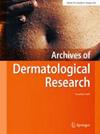造血干细胞转化治疗银屑病复发。系统综述
摘要
牛皮癣是一种慢性、全身性、自身免疫性疾病,具有很高的进展和复发率,使治疗成为一项挑战,需要新的治疗选择。造血干细胞移植(HSCT)是一种很有前途的治疗血液系统恶性肿瘤的方式。多例临床病例发现,血液学肿瘤患者的银屑病在HSCT后得到有效控制,随访中未发生复发。由于其潜在的免疫调节活性,造血干细胞移植在治疗牛皮癣和预防其复发方面显示出相当大的希望。因此,我们通过系统文献综述(SLR)来评估HSCT治疗银屑病患者的疗效。我们系统检索了PubMed、Cochrane Library、Web of Science (WOS)、CNKI (CNKI)和万方数据库,以确定2023年5月31日之前发表的研究。所有类型的临床研究均被纳入考虑:≥12岁的恶性血液病和银屑病患者接受造血干细胞移植治疗。我们纳入了那些报告了我们感兴趣的结果的研究。排除标准:动物模型,人间充质干细胞(hMSC)移植,叙述性评论,给编辑的信件。使用MeSH和“关键词”术语。证据水平和质量评级是乔安娜布里格斯研究所(JBI)列出的。我们最初确定了90篇文章,其中20篇最终被纳入(1个病例系列和19个病例报告)。本文纳入41例患者,其中男33例,女8例,年龄12 ~ 67岁。证据等级多为4级(JBI);证据质量满足(≥50%的JBI项目)。主要结局指标为每项研究随访期间患者牛皮癣复发情况。我们根据HSCT类型(自体或异体移植)以及移植后是否给予GVHD治疗对结果数据进行了亚组分析。综合无荟萃分析项目(SWiM)显示,随访期间银屑病(和/或银屑病关节炎)复发是主要关注的结局。总的来说,在我们的研究中,41例患者中有31例(75.6%)在随访期间没有复发,最长随访时间为264个月(22年),最短随访时间为5个月。其余10例患者(24.4%)在移植后随访中出现银屑病复发,移植后1.4个月出现皮损最早复发,3.5个月皮损消失;最后一次复发发生在移植后60个月,而患者在156个月时经历了银屑病关节炎的突然发作,但与移植前相比,银屑病和关节炎的严重程度和持续时间有所改善。HSCT有望成为一种有效的治疗银屑病的方法,同时也能治疗多种银屑病患者的复发。未来需要更好的流行病学设计和深入的研究来评估和阐明HSCT治疗牛皮癣的益处。回顾性非对照研究,小样本量,有一些不完整的数据。Psoriasis is a chronic, systemic, autoimmune disease with a high rate of progression and relapse, making treatment a challenge and requiring new therapeutic options. Hematopoietic stem cell transplantation (HSCT) is a promising therapeutic modality for hematological malignancies. Several clinical cases have found that psoriasis in patients with hematological tumor was effectively controlled after HSCT and did not have experienced recurrence during follow-up. HSCT shows considerable promise in the treatment of psoriasis and prevention of its recurrence because of its potential immunomodulatory activity. Therefore, we evaluated the efficacy of HSCT in patients with psoriasis through a systematic literature review (SLR). We systematically searched the PubMed, the Cochrane Library, Web of Science (WOS), China National Knowledge Infrastructure (CNKI) and Wanfang databases to identify studies published before May 31, 2023. All types of clinical studies were considered: patients ≥ 12 years old with hematologic malignancies and psoriasis undergoing HSCT therapy. We included studies if they reported on the outcomes of interest. Exclusion criteria: animal models, human mesenchymal stem cells (hMSC) transplants, narrative reviews, letters to the editor. MeSH and “Key word” terms were used. The level of evidence and the quality rating were rated Joanna Briggs Institute (JBI) lists. We initially identified 90 articles, of which 20 were finally included (1 case series and 19 case reports). These twenty articles included 41 patients (33 male and 8 female, age range 12–67 years). The level of evidence was mostly 4 (JBI); the quality of evidence was met (≥ 50% of JBI items). The primary outcome indicator was psoriasis recurrence in patients during the follow-up time of each study. We performed subgroup analyses of the resulting data according to type of HSCT (autologous or allogeneic transplantation), and whether or not treatment for GVHD was administered after transplantation. Synthesis without meta-analysis items (SWiM) showed that recurrence of psoriasis (and/or psoriatic arthritis) during follow-up was the primary outcome of interest. Overall, a total of 31 (75.6%) of the 41 patients included in our review did not experience recurrence during follow-up period, with a maximum follow-up of 264 months (22 years) and a minimum of 5 months. The remaining 10 patients (24.4%) experienced recurrence of psoriasis during post-transplantation follow-up, with the earliest recurrence of skin lesions occurring at 1.4 months after transplantation but the lesions disappearing at 3.5 months; and the latest recurrence occurred up to 60 months post-transplant, while the patient experienced a flare-up of psoriatic arthritis at 156 mouths, but the severity and duration of psoriasis and arthritis improved compared to pretransplant. HSCT is expected to be an effective treatment for psoriasis as well as recurrence for a wide range of psoriasis patients. Future better epidemiological designs and in-depth studies are needed to evaluate and clarify the benefits of HSCT in psoriasis. Retrospective uncontrolled study, small sample size, with some incomplete data.

 求助内容:
求助内容: 应助结果提醒方式:
应助结果提醒方式:


